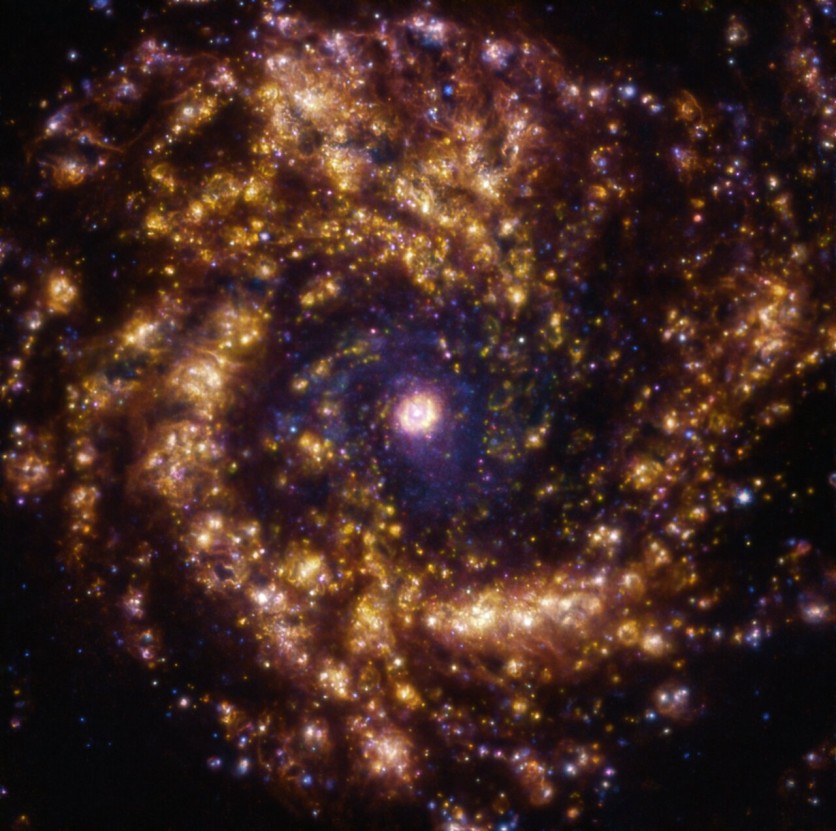Indeed, the universe is brimming with bewitching objects. This eerie yet majestic whirlpool of golden wonders is an example of the cosmic oddities and spectacles that several space observatories in the world are aiming to capture.
With ESO's powerful telescope, it could witness this vision of magnificence.
NGC 4303, often known as Messier 61, is a spiral galaxy featured in this photo that contains stars and is 50 million light-years away from Earth in the constellation Virgo. It is also considered one of the largest galaxies in the Virgo Cluster, with a sizable collection of neighboring galaxies.

Starburst Galaxy
A starburst galaxy is one in which an exceptionally large number of stars are formed, and NGC 4303 is an example of such a galaxy. The European Southern Observatory (ESO) released a statement saying that by studying this type of galaxy, astronomers will better comprehend how stars are formed throughout the cosmos.
"Being a so-called starburst galaxy, it has an unusually high amount of stars being born, and has been used by astronomers as a laboratory to better understand the fascinating phenomena of star formation," ESO wrote in a news release.
ESO officials added that cold gas clouds collapse to generate stars. These newly formed stars will, in turn, emit energetic radiation that will heat and ionize the remaining gas in the area.
The image, which was captured by the ESO's Very Large Telescope (VLT) in Chile, depicts dazzling swirling clouds of ionized gas that are like a "whirlpool of gold," according to the space agency's press release.
The swirling clouds also appear like cosmic breadcrumbs that trace the path of new stars being formed.
Read also : NASA's Hubble Space Telescope Captures 'Orion Nebula's Dreamy Cloudscape' With Over 500 Exposures!
Jewel-Like Image
To get this "jewel-like" image, astronomers used the Multi-Unit Spectroscopic Explorer (MUSE) instrument on the VLT to observe NGC 4303 at various light wavelengths.
Combining their observations led to the discovery of a dazzling golden vortex that was dotted with blue, green, and red gas clouds that represented the ionized oxygen, hydrogen, and sulfur clouds that surrounded the star-forming galaxy.
According to the ESO's press release, the most recent observations were made as part of a research called Physics at High Angular resolution in Nearby Galaxies (PHANGS), which seeks to identify nearby galaxies at all electromagnetic wavelengths.
Related Article : NASA's Hubble Space Telescope Captures 'Butterfly Nebula' In Stunning Motion | Fun Facts About This Beautiful Space Butterfly
This article is owned by Tech Times
Written by Joaquin Victor Tacla
ⓒ 2025 TECHTIMES.com All rights reserved. Do not reproduce without permission.




